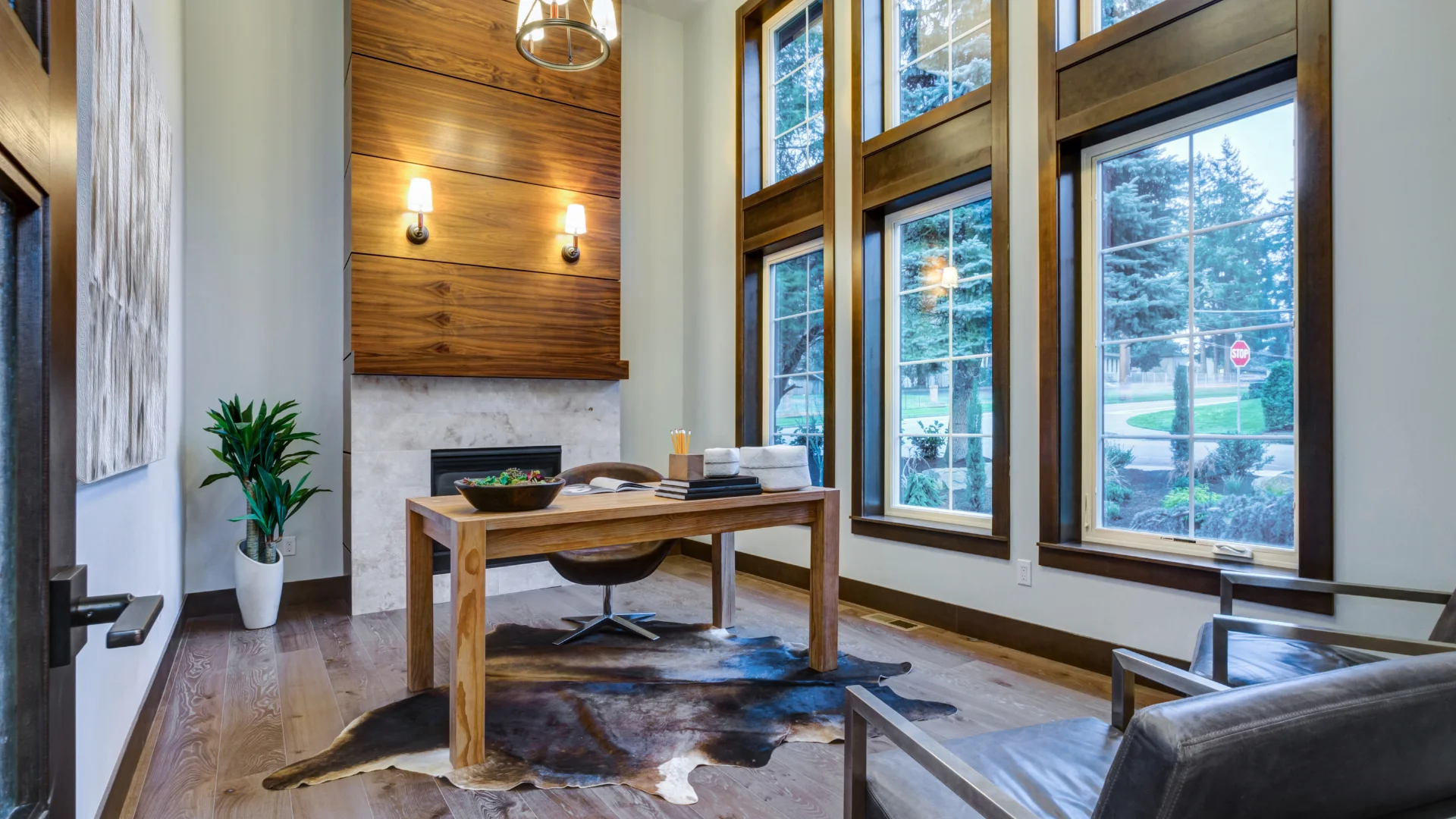Introduction
The rise of remote work has made home offices a significant feature in modern homes. Creating a functional and aesthetically pleasing home office through DIY projects can enhance your living space and significantly increase your home’s value. This article explores the benefits, provides real statistics, and offers practical advice on whether you should remodel your home office or spare room.
The Financial Benefits of DIY Home Office Projects
Increased Property Value
A well-designed home office can increase your property’s market value. According to a study by the National Association of Realtors (NAR), homes with functional home offices are more attractive to potential buyers. This trend has been amplified by the increase in remote work. Remodeling a home office is among the most cost-effective home improvements, with a median spend of about $1,200, which can yield significant returns on investment (ROI) when selling the home.
Return on Investment (ROI)
Home office remodels have been shown to provide a good return on investment. According to RubyHome, the average cost to remodel a home office is around $1,200, making it one of the least expensive home improvement projects. Despite the low cost, it can significantly increase the appeal and functionality of the home, potentially adding thousands of dollars to the resale value. This project, coupled with the growing demand for remote workspaces, can make your home more competitive in the market.
Appeal to Remote Workers
The demand for home offices has surged with the increase in remote work. A survey by the National Association of Realtors found that 31% of buyers’ agents reported that having a dedicated home office increased the home’s appeal. Buyers are increasingly looking for homes that offer a separate, quiet space to work, making a well-executed home office a strong selling point.
The Practical Benefits of a Home Office
Improved Productivity
A dedicated home office can significantly improve productivity. It provides a quiet, organized space separate from the rest of the home, reducing distractions and increasing focus. This separation is crucial for maintaining work-life balance, which is a significant factor for remote workers.
Cost Savings
DIY home office projects can be much more cost-effective than hiring professionals. According to a report by CivicScience, nearly 75% of homeowners who undertake DIY projects do so to save money. The median cost of DIY home improvement projects generally falls between $2,000 and $5,000, and for a home office, it can be even less. This approach not only saves money but also allows homeowners to customize the space to their exact needs and preferences.
Customization
DIY projects offer the flexibility to customize your home office to meet your specific needs. Whether you need a large desk for multiple monitors, additional shelving for storage, or specific lighting arrangements, DIY projects allow you to design the space that best suits your workflow and aesthetic preferences.
Common Tools and Materials for DIY Home Office Projects
Essential Tools
- Cordless Drill: For assembling furniture and mounting shelves.
- Screwdriver Set: For various assembly tasks.
- Measuring Tape: For accurate measurements.
- Level: To ensure shelves and pictures are hung straight.
- Saw: For cutting wood and other materials.
- Safety Gear: Including gloves, goggles, and masks to protect against dust and debris.
Essential Materials
- Wood and Lumber: For building desks, shelves, and other furniture.
- Paint and Primer: For adding color and protecting surfaces.
- Lighting Fixtures: Including desk lamps and overhead lights.
- Storage Solutions: Such as shelves, drawers, and cabinets.
- Ergonomic Furniture: Chairs and desks designed for comfort and productivity.
Safety Considerations
Tool Safety
- Always use tools according to the manufacturer’s instructions.
- Keep tools in good working condition and inspect them before use.
- Use appropriate personal protective equipment (PPE) such as gloves, goggles, and masks.
Electrical Safety
- Ensure all electrical installations comply with local building codes.
- Turn off power at the circuit breaker before starting electrical work.
- Use insulated tools and wear rubber-soled shoes when working with electricity.
Chemical Safety
- Store paints, adhesives, and other chemicals in their original containers and out of reach of children and pets.
- Work in well-ventilated areas to avoid inhaling fumes.
- Wear appropriate PPE when handling chemicals.
Should You Remodel Your Home Office or Spare Room?
Consider Your Needs
Before starting a remodel, consider your specific needs. Do you need a quiet space for video calls, or a large desk for multiple monitors? Assessing your requirements will help you design a space that improves your productivity and comfort.
Budget and ROI
Evaluate your budget and potential ROI. Remodeling a home office is a relatively low-cost project with high returns. If your budget is limited, focus on essential improvements like ergonomic furniture and efficient storage solutions. Remember, even small updates can significantly enhance the functionality and appeal of your space.
DIY vs. Professional Help
Determine whether you can handle the project yourself or if you need professional help. While DIY projects can save money, some tasks, like electrical work or structural changes, might require professional expertise. Weigh the costs and benefits to decide the best approach for your situation.
Market Trends
Consider current market trends. The demand for home offices is high, and this trend is likely to continue as remote work becomes more common. Investing in a home office can make your property more attractive to potential buyers and increase its market value.
Conclusion
Remodeling your home office through DIY projects can provide significant financial and practical benefits. It enhances your property’s value, appeals to remote workers, and improves your productivity. By carefully planning your project, choosing the right tools and materials, and prioritizing safety, you can create a functional and inviting workspace that meets your needs and boosts your home’s market appeal. Given the growing importance of home offices, this investment is likely to yield substantial returns in both the short and long term. If you’re considering remodeling a spare room into a home office, the current trends and data strongly support taking the plunge.







